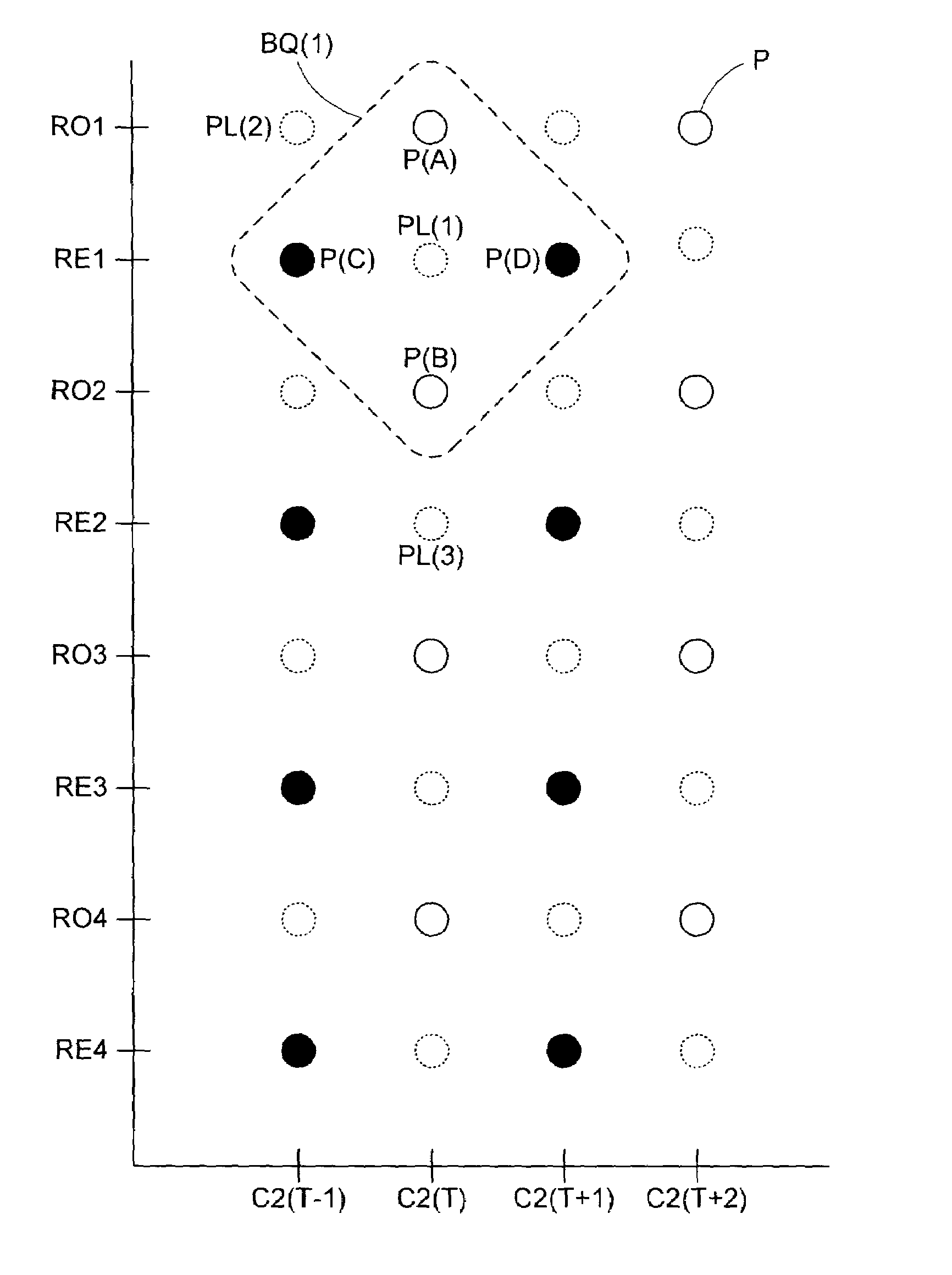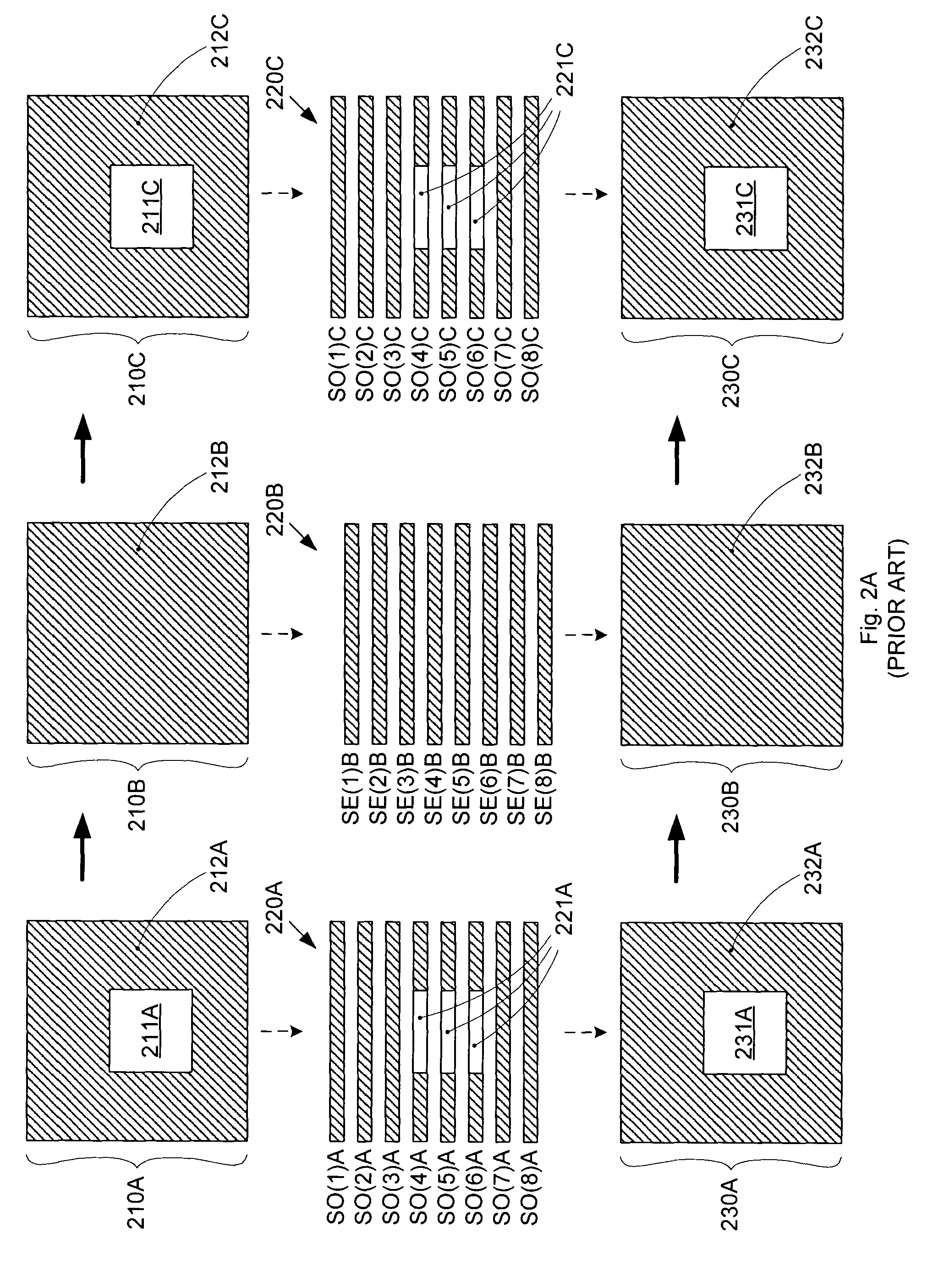Mixed 2D and 3D de-interlacer
a technology of interlacer and 2d, applied in the field of digital graphics systems, can solve the problems of introducing significant inaccuracies of certain image patterns, reducing the resolution of less detail in the final video display, so as to achieve maximum visual accuracy, enhance the effect of the effective resolution of the interpolation algorithm, and enhance the accuracy of the final output fram
- Summary
- Abstract
- Description
- Claims
- Application Information
AI Technical Summary
Benefits of technology
Problems solved by technology
Method used
Image
Examples
Embodiment Construction
[0029]The invention provides a mixed 2D-3D de-interlacing methodology that allows interpolation to be used to generate an accurate video display from an interlaced video stream. Each field in the interlaced video stream is converted into a full frame by interpolating pixel data for each blank row in the field using both common-field pixel data (i.e., pixel data from the same field as the field being converted) and cross-field pixel data (i.e., pixel data from fields other than the field being converted). This “mixed” interpolation algorithm minimizes the resolution-based defects associated with conventional 2D de-interlacing of still images.
[0030]FIG. 3A shows four consecutive fields 600(T−1), 600(T), 600(T+1), and 600(T+2) of an interlaced video signal. Each of the fields includes twenty pixels P, arranged into five columns C1, C2, C3, C4, and C5 and four rows. Even fields 600(T−1) and 600(T+1) include even rows RE1, RE2, RE3, and RE4, while odd fields 600(T) and 600(T+2) include o...
PUM
 Login to View More
Login to View More Abstract
Description
Claims
Application Information
 Login to View More
Login to View More - R&D
- Intellectual Property
- Life Sciences
- Materials
- Tech Scout
- Unparalleled Data Quality
- Higher Quality Content
- 60% Fewer Hallucinations
Browse by: Latest US Patents, China's latest patents, Technical Efficacy Thesaurus, Application Domain, Technology Topic, Popular Technical Reports.
© 2025 PatSnap. All rights reserved.Legal|Privacy policy|Modern Slavery Act Transparency Statement|Sitemap|About US| Contact US: help@patsnap.com



